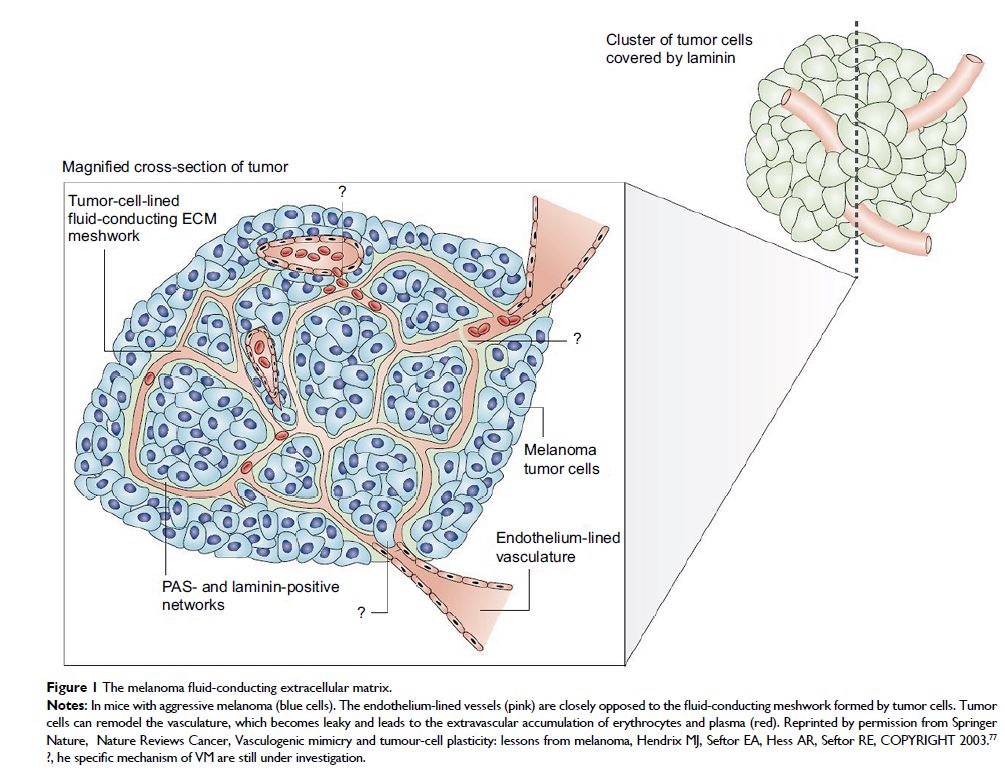108605
论文已发表
注册即可获取德孚的最新动态
IF 收录期刊
- 3.4 Breast Cancer (Dove Med Press)
- 3.2 Clin Epidemiol
- 2.6 Cancer Manag Res
- 2.9 Infect Drug Resist
- 3.7 Clin Interv Aging
- 5.1 Drug Des Dev Ther
- 3.1 Int J Chronic Obstr
- 6.6 Int J Nanomed
- 2.6 Int J Women's Health
- 2.9 Neuropsych Dis Treat
- 2.8 OncoTargets Ther
- 2.0 Patient Prefer Adher
- 2.2 Ther Clin Risk Manag
- 2.5 J Pain Res
- 3.0 Diabet Metab Synd Ob
- 3.2 Psychol Res Behav Ma
- 3.4 Nat Sci Sleep
- 1.8 Pharmgenomics Pers Med
- 2.0 Risk Manag Healthc Policy
- 4.1 J Inflamm Res
- 2.0 Int J Gen Med
- 3.4 J Hepatocell Carcinoma
- 3.0 J Asthma Allergy
- 2.2 Clin Cosmet Investig Dermatol
- 2.4 J Multidiscip Healthc

血管生成拟态进展的概述 - 肿瘤治疗的一个潜在目标
Authors Ge H, Luo H
Received 5 February 2018
Accepted for publication 30 March 2018
Published 2 August 2018 Volume 2018:10 Pages 2429—2437
DOI https://doi.org/10.2147/CMAR.S164675
Checked for plagiarism Yes
Review by Single-blind
Peer reviewers approved by Dr Justinn Cochran
Peer reviewer comments 2
Editor who approved publication: Professor Luzhe Sun
Abstract: Vasculogenic mimicry (VM) describes the process utilized by highly
aggressive cancer cells to generate vascular-like structures without the
presence of endothelial cells. VM has been vividly described in various tumors
and participates in cancer progression dissemination and metastasis. Diverse
molecular mechanisms and signaling pathways are involved in VM formation.
Furthermore, the patterning characteristics of VM, detected with molecular
imaging, are being investigated for use as a tool to aid clinical practice.
This review explores the most recent studies investigating the role of VM in
tumor induction. Indeed, the recognition of these advances will increasingly
affect the development of novel therapeutic target strategies for VM in human
cancer.
Keywords: vasculogenic mimicry, mechanisms, molecular imaging, clinical
significance, target therapy
